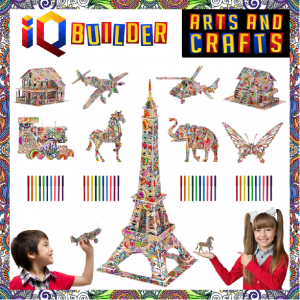

Are you having a hard time getting your child interested in math or science? If so, it may be a good idea to look into STEM learning, which has been proven to engage children in the areas of Science, Technology, Engineering and Mathematics in a fun way. Studies by researchers have highlighted a strong correlation between early childhood and STEM learning. Research suggests children have the potential to learn mathematics and logic best between the ages of 1 and 4. The earlier students understand math and science concepts, the better equipped they are for future learning and higher education.
WHAT IS STEM?
STEM learning at the early stages is vital to allow students to understand science, technology, engineering and mathematics so they can get ahead on a national and international level. Currently American students are falling behind in science and math according to the report by Trends in International Mathematics and Science Study. The study found US students ranked 9th and 10th

for eight grade math and science respectively, and were not even in the top ten for 4th Grade math. Recognizing the need for STEM-based learning, teachers and schools are incorporating the following techniques into the curriculum at the pre-school and primary levels to help students develop these skills.
4 KEY STEM LEARNING TECHNIQUES FOR CLASSROOMS

Reflection
Teachers make use of what already exists in the curriculum and refine it to reflect the core STEM principles. Lessons are made interesting and activities become a useful blend of play and learning. Instead of presenting facts through books and videos, ideas are put forward through questions and problems. Teachers focus on incorporating questioning techniques in the classroom to encourage
students to inquire about life. Some instructors use an exciting project like building a structure from blocks or making chocolate-chip cookies. This encourages kids to ask questions like, ‘How can we divide these cookies for a group?’ or ‘How can I make my block-skyscraper tall but not let it topple’?
Reflection
Teachers make use of what already exists in the curriculum and refine it to reflect the core STEM principles. Lessons are made interesting and activities become a useful blend of play and learning. Instead of presenting facts through books and videos, ideas are put forward through questions and problems. Teachers focus on incorporating questioning techniques in the classroom to encourage students to inquire about life. Some instructors use an exciting project like building a structure from blocks or making chocolate-chip cookies. This encourages kids to ask questions like, ‘How can we divide these cookies for a group?’ or ‘How can I make my block-skyscraper tall but not let it topple’?
Modification
Learning is made fun by adding components of design, build and experimentation. Children learn through playful experiences and involving them in hands-on projects is an effective way to impart knowledge. This approach helps create a learning environment in order to encourage investigation and discovery. Most teachers use interesting materials like cotton balls, beads, straws, popsicle sticks, erasers and cardboard to help kids learn measurement. They do this by designing a tool to calculate the volume, mass and area of different objects.
Engagement
This approach incorporates STEM learning with a focus-on-fun element to make it a part of the everyday classroom. A successful STEM lesson keeps the students engaged and motivates them to solve problems. Such a lesson makes use of an inquiry-driven approach to spark the students’ curiosity, resulting in an interactive learning experience. For example, some teachers use faux money students can use to play buy-and-sell to learn about bartering, trading and purchasing.
Collaboration
Open source channels like YouTube and Pinterest are an effective means for educators to share ideas. A great online learning platform for STEM where collaboration is encouraged is K3 STEM Science. It’s a productive hub with a wide range of resources for primary grade classrooms. Another noteworthy resource for teachers is the use of classroom blogs and personal educator blogposts to make instruction more STEM-centric.

A study by the Carnegie Foundation Commission found that a nation’s capability to succeed and drive innovation through its workforce is largely dependent on a solid base of scientific and mathematics knowledge. Teaching math and science concepts to students at the elementary level sets the foundation for understanding, enabling them to excel in the future and help build a better world.
References
https://www.nwea.org/blog/2015/stem-primary-classroom-4-ways-educators-acclimating-stem-education/
http://naturalstart.org/feature-stories/engaging-children-stem-education-early
https://www.edweek.org/ew/articles/2013/03/06/23chesloff.h32.html
http://www.morehouse.edu/media/facultydevelopment/photos/STEM.jpg
https://www.childrenslearninginstitute.org/media/1168/thinkstockphotos-115752220.jpg
https://blog.ed.gov/wp-content/uploads/2014/06/Bracken-Photo.jpg
https://stemforkids.net/main/wp-content/uploads/2016/07/EducationalConnections.jpg








